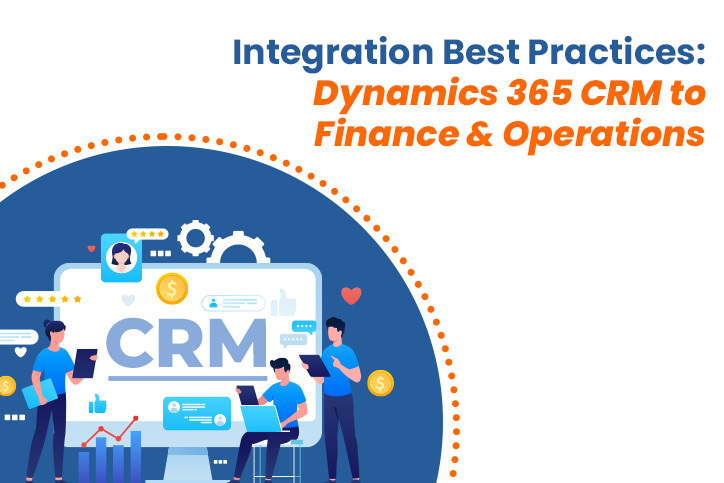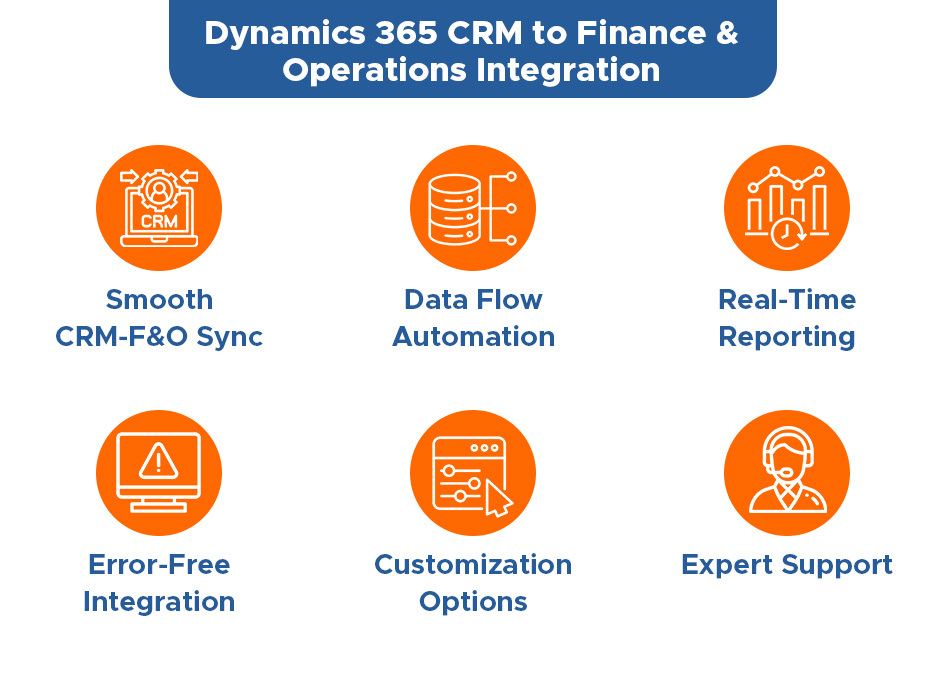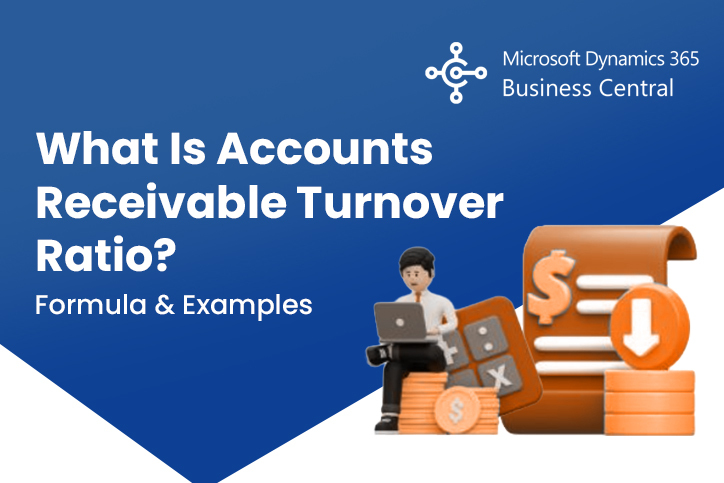Is disconnected data slowing your business down? Many mid to large enterprises face delayed invoicing, siloed teams, and forecasting blind spots because their CRM doesn’t sync with Finance & Operations. These inefficiencies hurt cash flow, frustrate teams, and limit growth. In this post, you’ll discover actionable strategies; how to integrate Dynamics 365 CRM with Finance and Operations and unleash real-time insights that drive faster decisions and stronger ROI.
The Core Challenge: Disjointed Systems Holding You Back
When customer-facing teams and finance work in silos, the business suffers. If sales doesn’t see finance data or finance reconciles manually every day, it is not sustainable. Legacy ERP systems and failed rollouts make it worse, creating daily friction across departments.
Common issues in D365 CRM to F&O integration include:
- Teams wasting time manually transferring data.
- Reports that do not match, eroding leadership’s confidence.
- Forecasting that lags behind reality, leading to poor planning.
Integration is not just about connecting systems. It is about creating a unified business platform where every department works from the same playbook. Now more than ever, integration is your gateway to smoother operations, better cash flow, and empowered teams.
Best Practices for Seamless Dynamics 365 Integration
1. Clarify What You Want to Achieve
Every integration should start with a clear business outcome. Integration is not magic. It is a strategic enabler that only works when guided by specific goals.
For example, your priorities might include:
- Shrinking order-to-cash cycles to improve cash flow.
- Centralizing customer data so all teams have a single source of truth.
- Increasing invoice accuracy to strengthen compliance and reduce disputes.
Documenting KPIs upfront ensures your integration won’t drift. It also gives leadership a benchmark to measure progress.
2. Lean on a Certified Dynamics 365 Partner in the UAE
Integration projects succeed or fail based on expertise. Working with a Microsoft Dynamics 365 Business Central partner UAE ensures local compliance, smoother rollouts, and access to proven playbooks.
A qualified partner provides:
- Industry-tailored templates that save time and reduce rework.
- Minimal disruption during deployment through phased methodologies.
- Ongoing support for updates, troubleshooting, and scaling.
Businesses that attempt integration without expert support often overspend, over-customize, and fail to deliver adoption. Partnering with the right team makes success far more achievable.
3. Use Microsoft’s Built-in Tools and Skip Custom Code
One of the biggest mistakes enterprises make is jumping straight into custom development. Microsoft Dynamics 365 already includes powerful native connectors and APIs designed to handle most integration needs.
By starting with built-in tools, businesses benefit from:
- Lower long-term maintenance costs.
- Fewer custom bugs that slow down operations.
- Faster troubleshooting since Microsoft supports standard connectors.
The thumb rule is simple: start with out-of-the-box tools and only extend where there is a clear business need. This approach protects your budget and ensures system upgrades remain seamless.
4. Make Data Governance a Priority
Integration depends on clean and reliable data. If you migrate inconsistent or duplicated records, even the best connector will fail.
Before going live, focus on three core governance steps:
- Establish master records for customers, vendors, and products.
- Remove duplicates and obsolete entries that cause reporting errors.
- Enforce secure, role-based access rules for sensitive financial data.
Strong governance ensures your integrated system is accurate and trustworthy. This is especially critical for financial audits, compliance checks, and executive reporting.
5. Roll Out in Phases and Test Frequently
Attempting a big-bang rollout is risky and often overwhelming. A phased approach helps teams adapt while reducing the chance of major disruptions.
A proven rollout sequence looks like this:
- Sync core modules such as customer records and invoicing.
- Expand into order management, project accounting, or supply chain modules.
- Layer in advanced analytics and reporting once the core system stabilizes.
Testing after each phase is essential. It allows you to gather feedback, fix issues, and improve user confidence.
6. Enable Real-Time Visibility Across Teams
Speed of information drives better business decisions. When CRM and Finance data synchronize in real time, the impact is immediate.
Benefits include:
- Sales teams running instant credit checks before closing deals.
- Finance teams generating invoices as soon as contracts are signed.
- Executives accessing up-to-the-minute reports instead of waiting for end-of-month reconciliations.
Real-time data flow eliminates bottlenecks and ensures leaders can act with confidence.
7. Future-Proof Your Integration for Growth
Integration is not just about solving today’s issues. It should also prepare your business for tomorrow.
Future-proofing means:
- Designing for multi-currency and multi-entity operations.
- Supporting entry into new markets or acquisitions.
- Choosing scalable cloud connectors that handle increased data volumes.
By thinking long-term, businesses avoid costly rebuilds later. Integration should evolve with your business, not hold it back.
SoftArt’s Trusted 5-Step ERP Integration Framework
To simplify the process, here is a practical five-step framework based on proven ERP rollouts.
1. Assessment and Strategy
Evaluate your current systems, define business outcomes, and build a roadmap tailored to your priorities.
2. Data Preparation and Cleansing
Remove inconsistencies and duplicates. Even small errors can derail an integration if left unchecked.
3. Connector Setup
Deploy Microsoft-approved connectors for stable and maintainable integration.
4. Pilot Testing and Iteration
Run real scenarios early. Fine-tune workflows until they align with business processes.
5. Training and Adoption
Provide role-based training to sales, finance, and operations teams. Adoption ensures the system delivers on its promise.
Strategy Tips: Make Your Dynamics 365 Rollout Stick
Integration is not just technical. It is about people, processes, and adoption. Here are proven strategies to increase success:
- Engage stakeholders early: Finance, sales, and IT leaders should co-own the project from the start.
- Avoid heavy customization: Adapt workflows instead of overhauling the platform.
- Design with usability in mind: Intuitive interfaces drive daily adoption.
- Prepare people, not just technology: Run workshops, share success stories, and incentivize teams to embrace the change.
These steps create buy-in and reduce resistance across the organization.
Dynamics 365 Business Central Pricing in UAE
Budgeting is a critical step for CIOs and operations managers evaluating ERP transformation. According to the official SoftArt pricing guide, Microsoft Dynamics 365 Business Central pricing in UAE is structured into Essentials and Premium licensing tiers, billed per user per month.
Businesses can choose short-term subscriptions or lock in pricing for up to three years. Multi-year commitments often create savings and provide stability for financial planning. Additional costs apply for add-ons like the Power Platform or industry-specific customizations.
This transparent pricing model makes it easier for enterprises to forecast their investment and align costs with expected returns. Consulting with a dynamics 365 finance and operations integration service, SoftArt ensures you select the right licensing plan for your needs.
Example Integration Cost Bands
Every business wants clarity before committing to an integration project. While costs vary, SoftArt provides guidance that helps decision-makers budget with confidence.
| Integration Type | Cost Range | Timeline |
|---|---|---|
| Basic third-party CRM (native API) | $10,000 – $20,000 | 2–4 weeks |
| Multi-system ERP (custom +Middleware) | $15,000 – $40,000 | 8–16 weeks |
| E-commerce and inventory sync | $12,000 – $18,000 | 6–12 weeks |
These estimates help businesses set realistic budgets while planning for phased rollouts.
Why is Integration a Gamechanger?
Integrating Dynamics 365 CRM with Finance & Operations is more than a technical upgrade. It is a business transformation. Integration enables real-time data, strengthens collaboration, and improves how enterprises respond to market opportunities.
With the right approach and a trusted partner, integration creates measurable results such as faster invoicing, more accurate forecasts, and empowered teams. By working with experts in d365 finance and operations UAE, businesses unlock sustainable growth and future-ready operations.
Ready to simplify your ERP journey and maximize ROI? Schedule a free consultation with SoftArt Solutions Inc.
Frequently Asked Questions:
Q1. Why is it important to integrate Dynamics 365 CRM with Finance and Operations?
Ans. Integration allows businesses to unify customer data with financial operations. This improves visibility, reduces duplicate entries, streamlines workflows, and helps in making data-driven decisions quickly.
Q2. What are the common issues in D365 CRM to F&O integration?
Ans. Some common issues include data duplication, synchronization delays, mapping mismatches, and security permissions. With expert support and monitoring, these issues can be resolved effectively.
Q3. How long does the integration process usually take?
Ans. The timeline depends on business size and complexity. Standard integrations may take a few weeks, while more customized setups may take longer. Choosing a reliable Dynamics 365 Finance and Operations integration service helps speed up the process.
Q4. Can businesses in the UAE use D365 Finance and Operations integration?
Ans. Yes. Many companies in the UAE are leveraging D365 Finance and Operations UAE services to unify financial management with customer relationship management for smoother operations.









![Duplicate Data in Dynamics 365 [What It Costs and How to Fix It]!](https://softartsolutionsinc.com/wp-content/uploads/2025/12/duplicate-data-in-dynamics-365-what-it-costs-and-how-to-fix-it.jpg)